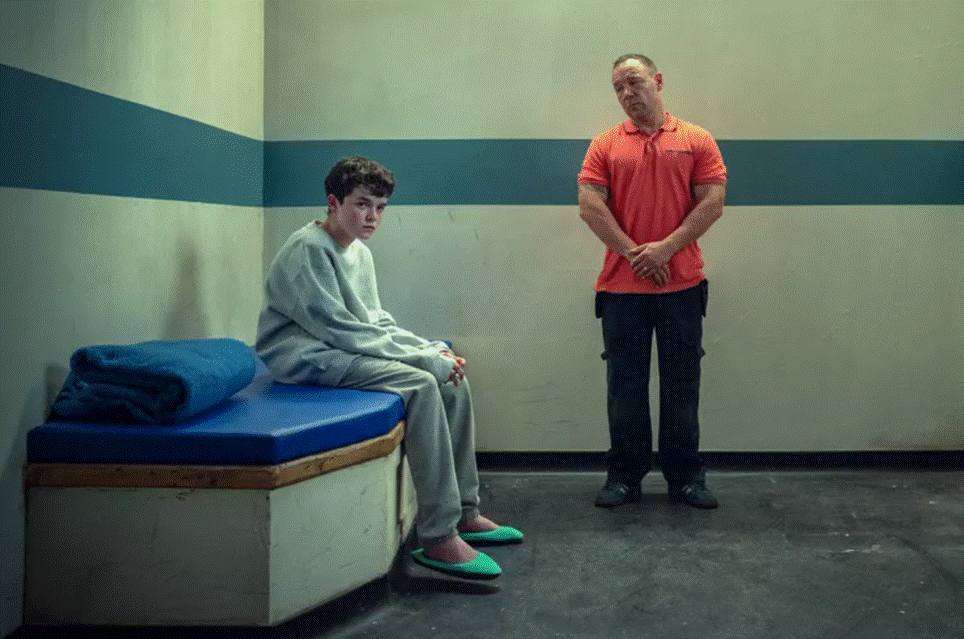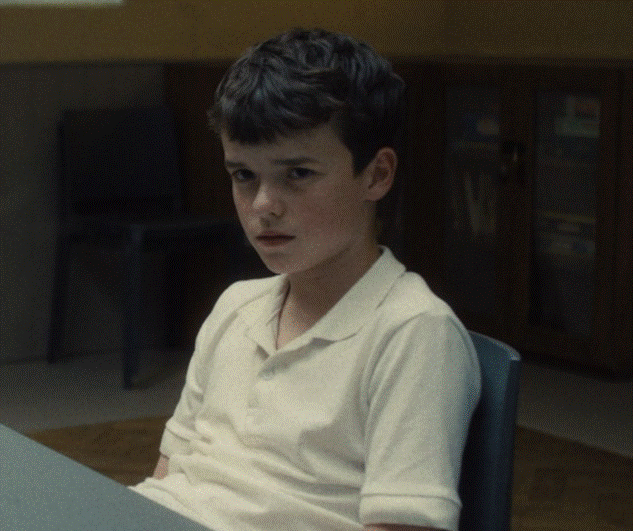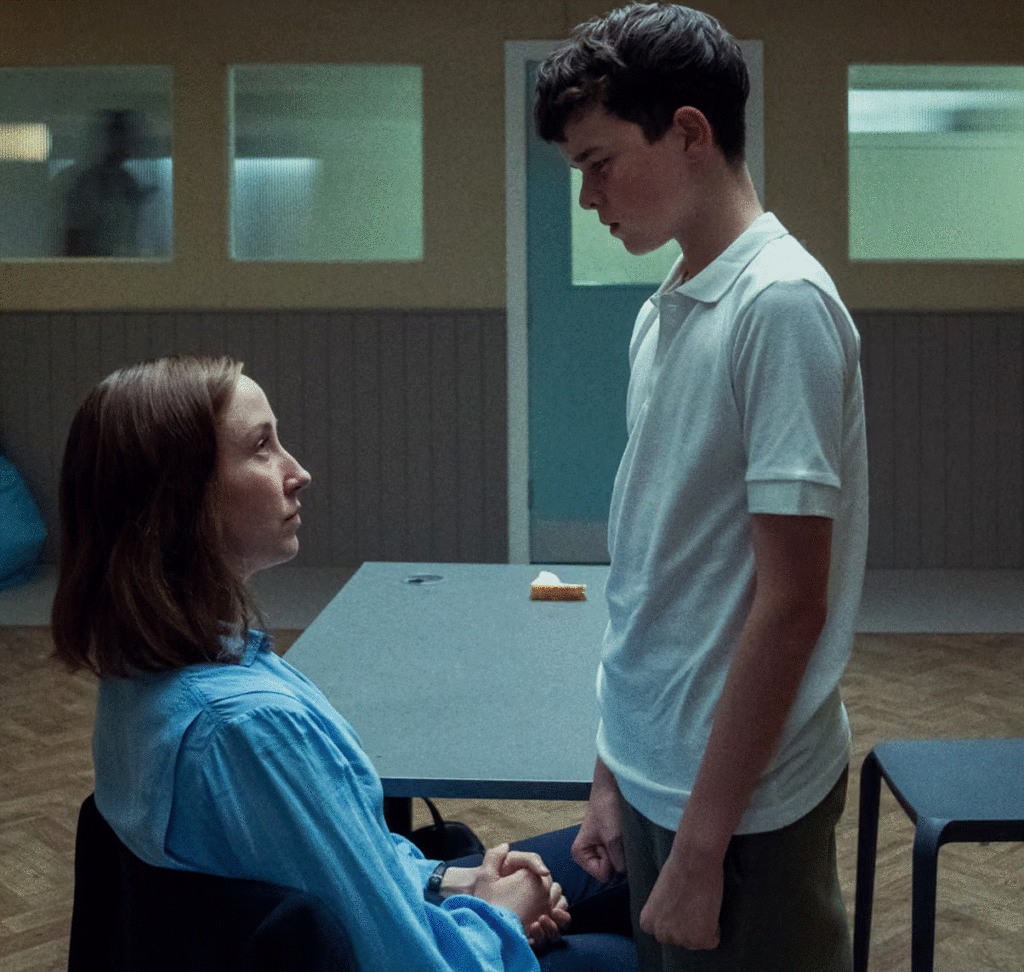Released on March 13, 2025, Netflix’s Adolescence is not merely another worth-binging crime drama TV- show but more a cultural wake-up call. This must watch! Written by renowned author Jack Thorne and produced by actor Stephen Graham , the show is about a boy who was complicit in a violent offence and takes viewers on a thrilling, emotional journey through toxic masculinity and family, coupled with internet radicalization. Directed by Philip Barantini, who has directed his own one-take feature ‘Boiling Point’. The series challenges the conventions of traditional TV storytelling thanks to its unorthodox format: four continuous, single-take episodes.
The series is unique right from the opening scene of the arrest of the young 13 year-old Jamie Miller (Owen Cooper) who has committed the murder of a schoolmate. Adolescence does not attempt to seek shock value but instead showcases a blunt, near claustrophobic examination of the emotional fallout of violence. The shows technical ambition and its natural social commentary results in it becoming one of the most discussed Netflix releases in 2025 as of yet, and has been described by The Guardian to have beat Stranger Things, with a reach of 141.2M views since its release in March, with the publication calling it “The closest to TV perfection in several decades.”
Within four, nearly 60-minute episodes, Adolescence does not waste time with distractions and narrative filler. The arrest of Jamie is just the beginning, the drama I zoomed in on was the desperate efforts made by his father Eddie (Stephen Graham) to find what could have brought his son to such a dark side. The series does not sensationalize the crime but rather puts events in context with respect to the consequences on Jamie’s family, the loved ones of the victim and the community at large. The episodes take place in real time, and the tension rises with the stakes and leaves the audience with no means of escaping. This storytelling element causes the series to be emotionally difficult and impossible to stop watching. Adolescence drags the discomfort, raw feeling and does not provide direct solutions easily.
The single-take presentation is not a trick here; it plays a vital role in the narration. These 60-minute takes were rehearsed by the director, Philip Barantini, and cinematographer, Matthew Lewis, with this careful craftsmanship giving a feeling of realism: the viewers feel as if they’ve been locked in the room with Jamie and share the growing sense of tension and dread with his family.

The critics have hailed this brave artistic decision, with Forbes declaring this show as a technical masterpiece that breaks the boundaries of television, it is this kind of restraint that transforms Adolescence into a true-crime drama rather than a work of cinema.
The core of the series is an emotional rollercoaster of Eddie Miller, a father who is torn between loving and feeling horribly disturbed at the same time towards his son. His acting is acute and so wrenching that the drama is grounded by his act, which is humane and enraged. The naive newcomer Owen Cooper is an equal footing, as he takes the vulnerability of Jamie and the war inside his soul without resorting to melodrama. His mute, fidgety manner compares with the combustive sorrow of Eddie, producing some of the most gut-wrenching moments of the series. Combined they make a story that is chillingly real.
The difference between Adolescence and other works is that it is culturally relevant. The series is not a mere narration, but rather a mirror of contemporary fears of toxic masculinity and radicalization on the Internet . It explores, through the story of Jamie, the way that extremist influencers lie in wait of young men, and how families will more often than not, ignore the warning signs only to realize it is too late. In the UK and Ireland this message has resonated, with the Irish Deputy Prime Minister demanding that the show be aired in schools as a cautionary against misogynistic speech.

Adolescence has received endless praise since its publication. Rotten Tomatoes gave it a 98 percent critics rating and Metacritic a 91/100 rating. It became the second most-watched English-language series on Netflix, with more than 141 million views and a massive amount of debate on social media about online male toxicity.
Adolescence is not so perfect despite the praise it receives from many viewers. Critics also complain that the single-take technique, although immersive, may also be self-indulgent or wearying. It does not entertain the attention span of many, leading to this opinion. Other people observe that Katie being the victim of the murder, is not developed enough as a character, but rather is used as a plot device. Nevertheless, these criticisms do not do much to undermine the power of the show.
Adolescence is an impressive feat: a show that is technically brilliant and yet with hugely relevant content, causing a chilling story of crime to be transformed into the one about youth, masculinity, and online culture, it rings long after it is over. It is no easy watch, but it is a necessary one, which will confirm its position as one of the boldest pieces of television in recent years.

